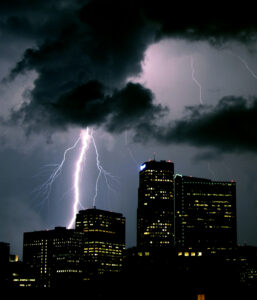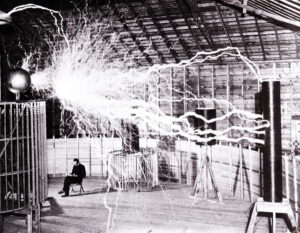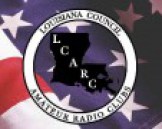The amateur service is generally not considered as safety or essential service. Some moderation must be considered before making an interference complaint. Hearing a distant repeater on your local frequency may be annoying, but cannot generally be defined as interference.
Hearing adjacent channel splatter while carrying on a conversation, while affecting the quality of the conversation, is not truly interference. If it makes communication completely impossible, then it could be considered interference, although it still may not be harmful or necessarily willful
The effect of unwanted energy due to one or a combination of emissions, radiations, or inductions upon reception in a radio communication system, manifested by any performance degradation, misinterpretation, or loss of information which could be extracted in the absence of such unwanted energy. (RR)
The Federal Communications Commission (FCC) defines harmful interference:
Interference which endangers the functioning of a radio navigation service or of other safety services or seriously degrades, obstructs, or repeatedly interrupts radio communication service operating in accordance with [the ITU] Radio Regulations. (CS)
Where the transmissions of a repeater cause harmful interference to another repeater, the two station licensees are equally and fully responsible for resolving the interference unless the operation of one station is recommended by a frequency coordinator and the operation of the other station is not. In that case, the licensee of the non-coordinated repeater has
§ 97.205primary responsibility to resolve the interference.
Types of Interference
Natural Interference

- Lightning: Crashing type momentary interference
- Static electricity: Crashing, ripping, tearing sounds
- Thermal shot: Momentary Impulse, raises noise floor of receiver
- Solar radiation: Raises noise floor of receiver
Man-made Non-Radio Interference

- Electric power sources (60 Hz) leakage: Arcing
- Neon signs: Continual arc
- Fluorescent light fixtures: Arcing
- Computer clocks (disc drive controllers etc.)
Unintentional or Accidental Interference
- Keying up on the repeater before turning up the volume control
- Sitting on the microphone
Willful Interference
- Intentionally tying up a repeater or frequency to prevent its use by other persons
- Objectionable / offensive language
- False cry for help.
Resolving Interference
The FCC does not normally get involved in solving unintentional or accidental interference. However they do occasionally assist in rectifying harmful interference. Sometimes they use the term, “malicious.” to justify their involvement. It is rare that they will get involved in an amateur radio interference complaint unless the offended amateur radio community has already done a lot of the work themselves.
- Keep a log of when the interference occurred, include dates, time and call signs.
- Document the interference with audio recordings.
- Locate the source using direction-finding equipment
- Try to solve the interference yourself before contacting others for help
Many interference problems can be solved ONLY by using CTCSS tone encoding and decoding on repeaters and the users station. As a condition of coordination, LCARC may require the use sub-audible or other types of encoding for access in order to reduce interference problems.
Interference Complaint
LCARC has no enforcement powers beyond revoking the coordination in cases where the repeater owner is not operating the repeater in a responsible manner. If you would like our assistance, please contact your Regional coordinator. Normally you will be asked to submit an Interference Complaint Form before we can officially investigate.
The Regional coordinator and two other amateurs are normally appointed to the interference committee. All parties will be notified on the committees decision. The final decision may be appealed to the LCARC grievance committee.

